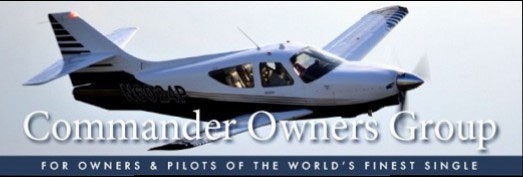Lawrence Rippon
New member
LEICESTER UK
- Aircraft Year
- 1977
- Aircraft Type
- 112B
- Reg Number
- G-BEPY
- Serial Number
- 524
Re: 112/B take off characteristics
Just a couple of things.
Is the weight distribution further forward in the Hot Shot than the normal 112B, just thinking of the trim position.
I guess the advice on full power climb to cruise level comes from a country where AVGAS isn’t $12.00/Gal.
From my own experience the 112B maintains ~500”pm at 100kts at 25”/2500rpm with 11gph but 27”/2700rpm used up to 1000’ but we live in a temperate climate in a part of Europe which is relatively flat.
I don’t think my standard 112B would maintain an acceptable
CHT if I climbed all the way to cruise on full power, even with the cowl flaps open.
Just a couple of things.
Is the weight distribution further forward in the Hot Shot than the normal 112B, just thinking of the trim position.
I guess the advice on full power climb to cruise level comes from a country where AVGAS isn’t $12.00/Gal.
From my own experience the 112B maintains ~500”pm at 100kts at 25”/2500rpm with 11gph but 27”/2700rpm used up to 1000’ but we live in a temperate climate in a part of Europe which is relatively flat.
I don’t think my standard 112B would maintain an acceptable
CHT if I climbed all the way to cruise on full power, even with the cowl flaps open.
